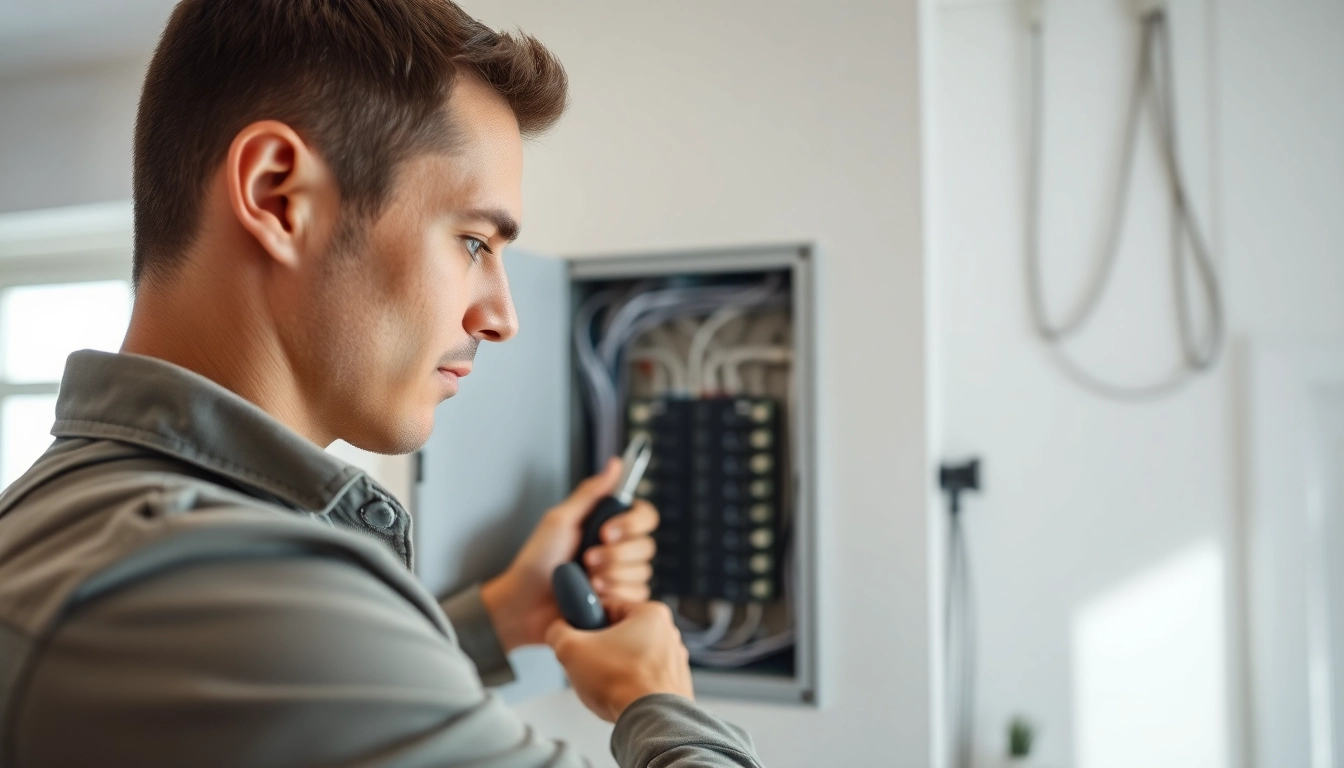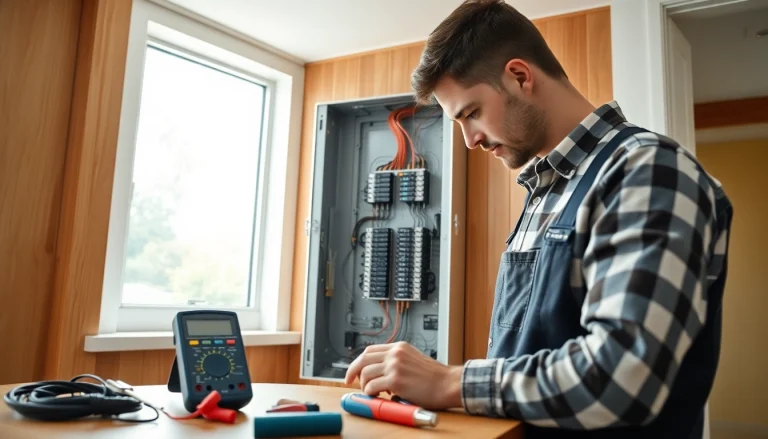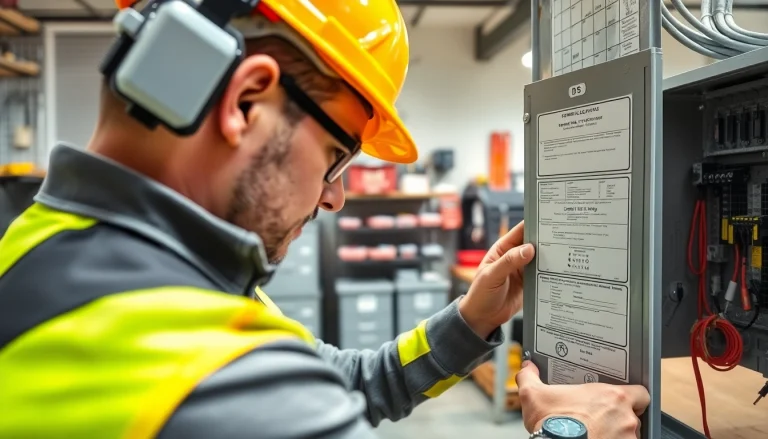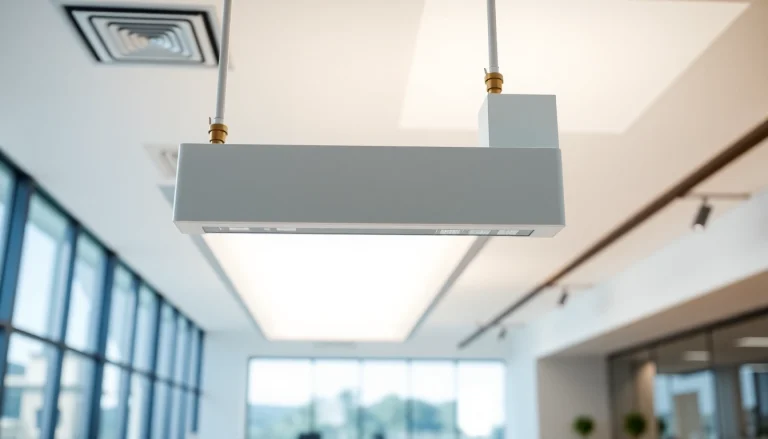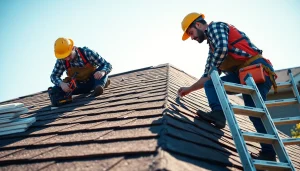Understanding Electrical Panel Upgrades
Upgrading your home’s electrical panel is a crucial decision that can bring numerous benefits. Whether you’re renovating your space, adding new appliances, or seeking to increase your home’s safety and efficiency, an electrical panel upgrade can play a pivotal role. In this comprehensive guide, we will discuss everything you need to know about electrical panel upgrades, including identification signs that suggest the need for an upgrade, the benefits associated with such an upgrade, and key considerations to keep in mind throughout the process. For a detailed explanation of proper timing related to electrical panel upgrades, you can visit Electrical Panel Upgrade.
What Is an Electrical Panel Upgrade?
An electrical panel upgrade refers to the process of replacing or upgrading the main service panel that distributes electricity throughout your home. The electrical panel serves as the hub for all electrical circuits within your house, controlling the flow of electricity from the utility company to your outlets, appliances, and lighting. An upgrade may be necessary to accommodate higher electrical demands, improve safety standards, or replace outdated technology. The two most common upgrades involve increasing the amperage rating, typically from 100 amperes to 200 amperes, and replacing older models with modern panels that offer enhanced functionality and improved safety features.
Signs That You Need an Upgrade
Recognizing the signs that indicate the need for an electrical panel upgrade is key to ensuring the safety and efficiency of your home’s electrical system. Here are some red flags to watch for:
- Frequent Circuit Breaker Trips: If the circuit breakers in your panel frequently trip, it may be a sign that your existing panel cannot handle the electrical load.
- Flickering or Dimming Lights: Inconsistent lighting can indicate that your panel is struggling to supply enough power.
- Need for Additional Circuits: If you’re planning to add more electrical devices or appliances, you may need an upgraded panel.
- Older Equipment: Homes built before the 1990s may have outdated panels that do not meet current safety standards.
- Corrosion or Damage: Physical damage or visible signs of corrosion in the panel can pose serious safety risks.
Benefits of Upgrading Your Electrical Panel
Upgrading your electrical panel significantly enhances your home’s electrical capabilities and offers numerous advantages:
- Increased Electrical Capacity: A higher amperage panel allows for greater electrical power distribution, accommodating more devices and appliances.
- Improved Safety: Modern panels adhere to current safety standards, reducing the risk of electrical fires and hazards.
- Enhanced Energy Efficiency: Newer models are designed to be more energy-efficient, often leading to lower electricity bills.
- Support for Modern Technology: An upgraded panel can easily support today’s advanced electrical appliances and smart devices.
- Increased Home Value: An upgraded electrical panel can increase your home’s resale value by attracting potential buyers looking for modern amenities.
Costs Associated with Electrical Panel Upgrades
Average Costs and Variations
The cost of upgrading an electrical panel can vary widely based on several factors. Typically, homeowners can expect to pay between $800 and $4,000 for a complete upgrade, with most common upgrades from 100 to 200 amps averaging between $1,300 and $3,000. These variations are influenced by the following:
- Type of Panel: Different panels come with varying price points based on quality and features.
- Labor Costs: Licensed electricians charge different rates based on region and their level of expertise.
- Permit Fees: Local regulations may require permits for panel upgrades, which can increase overall costs.
- Required Upgrades: Additional upgrades, such as new wiring or grounding systems, can add to the total expense.
Factors Influencing Upgrade Costs
In addition to the average costs, several factors can influence the total price of an electrical panel upgrade:
- Location: Depending on where you live, material and labor costs can vary significantly. Urban areas often experience higher costs than rural regions.
- Amperage Increase: Upgrading from a lower amperage to a higher amperage panel generally incurs more costs, particularly if it involves rewiring.
- Current System Condition: If your existing wiring and infrastructure need extensive repairs or enhancements, it may lead to higher project costs.
- Job Complexity: Complex installations that require more time and effort will naturally cost more.
Potential Savings and Returns on Investment
While the upfront costs of an electrical panel upgrade can be substantial, the long-term benefits often result in significant savings. Here’s how:
- Lower Energy Bills: With improved energy efficiency, upgraded panels can lead to reduced electricity costs over time.
- Reduced Repair Costs: Modern systems require less maintenance and fewer repairs than outdated models.
- Increased Home Value: A home with an upgraded electrical panel typically sees a better return on investment when reselling, as buyers prefer modern, efficient systems.
- Rebates and Incentives: Various local and federal programs may offer rebates or tax credits for energy-efficient upgrades, which can help mitigate costs.
How to Choose the Right Electrical Panel for Your Needs
Amperage Ratings Explained
Understanding amperage ratings is essential when selecting an electrical panel. Most homes require either 100-amp or 200-amp panels. Here’s a quick overview:
- 100-Amp Panels: Suitable for smaller homes with minimal electrical needs, typically supporting essential appliances and lighting but may not meet demands for larger devices.
- 200-Amp Panels: Ideal for modern homes, accommodating increased electrical loads from appliances such as HVAC systems, electric vehicles, and home automation devices.
- 400-Amp Panels: Typically used in larger homes or homes with high electrical demands, offering maximum capacity for extensive electrical needs.
Types of Electrical Panels Available
When selecting an electrical panel, there are various options available:
- Standard Breaker Panel: Most common type, featuring circuit breakers that protect individual circuits.
- Sub-Panels: Used to distribute power to specific areas or large appliances, sub-panels are fed directly from the main panel.
- Smart Panels: Equipped with technology to monitor energy usage and optimize performance, offering enhanced safety and efficiency.
- Combination Panels: These offer a combination of different functionalities, such as integrating surge protection and smart technology in one unit.
Consultation with a Licensed Electrician
Before deciding on the specifications of your electrical panel upgrade, it’s important to consult with a licensed electrician. They can provide invaluable insights that will guide your decision-making process, taking into account your home’s unique electrical needs and ensuring the safety and compliance of the installation.
Permits and Regulations for Electrical Panel Upgrades
Understanding Local Codes and Requirements
Each municipality has specific codes and regulations governing electrical work, including upgrades to electrical panels. Familiarizing yourself with local codes is essential to ensure compliance and safety. Non-compliance can result in fines, increased liability, and potential safety hazards.
The Importance of Permits
Securing the appropriate permits for your electrical panel upgrade is critical. Permits are designed to ensure that the work meets safety standards and is up to code. Working without the proper permits can have serious consequences, including fines and complications during home sales.
How to Navigate the Permit Process
Navigating the permit process can vary by location, but generally involves the following steps:
- Research Local Requirements: Check with your local building department to understand specific permit needs and costs.
- Prepare Necessary Documentation: Gather documentation that may include plans, specifications, and contractor details.
- Submit Application: Fill out the application and submit it along with any required fees. Ensure all information is accurate to avoid delays.
- Schedule Inspections: After the upgrade is complete, an inspection will typically be required to confirm that work complies with safety codes.
Maximizing the Benefits of Your Electrical Panel Upgrade
Future-Proofing Your Home’s Electrical System
Future-proofing your electrical system involves planning for potential increases in electrical demand. Consider the following strategies to maximize your investment:
- Assessing potential future electrical needs, such as home expansions, additional appliances, or electric vehicles.
- Choosing a panel with a higher amperage rating than you currently need.
- Implementing a flexible wiring layout to easily accommodate future changes.
Integrating Modern Technology and Appliances
As technology continues to evolve, so do the demands on your home’s electrical system. An upgraded panel can help incorporate modern devices and solutions, such as:
- Smart home technology, including advanced lighting systems and security devices.
- Electric vehicle charging stations, which require significant electrical capacity.
- Renewable energy sources, such as solar panels, which may necessitate additional capacity.
Maintaining Safety and Compliance Post-Upgrade
After your electrical panel upgrade, it is crucial to maintain safety and compliance. This can be accomplished by:
- Scheduling regular inspections and maintenance of your electrical system.
- Keeping the area around your electrical panel clear and accessible.
- Being aware of changes in local codes and updating your system as necessary.
- Staying observant for signs of electrical issues, such as flickering lights or unusual sounds from the panel.
